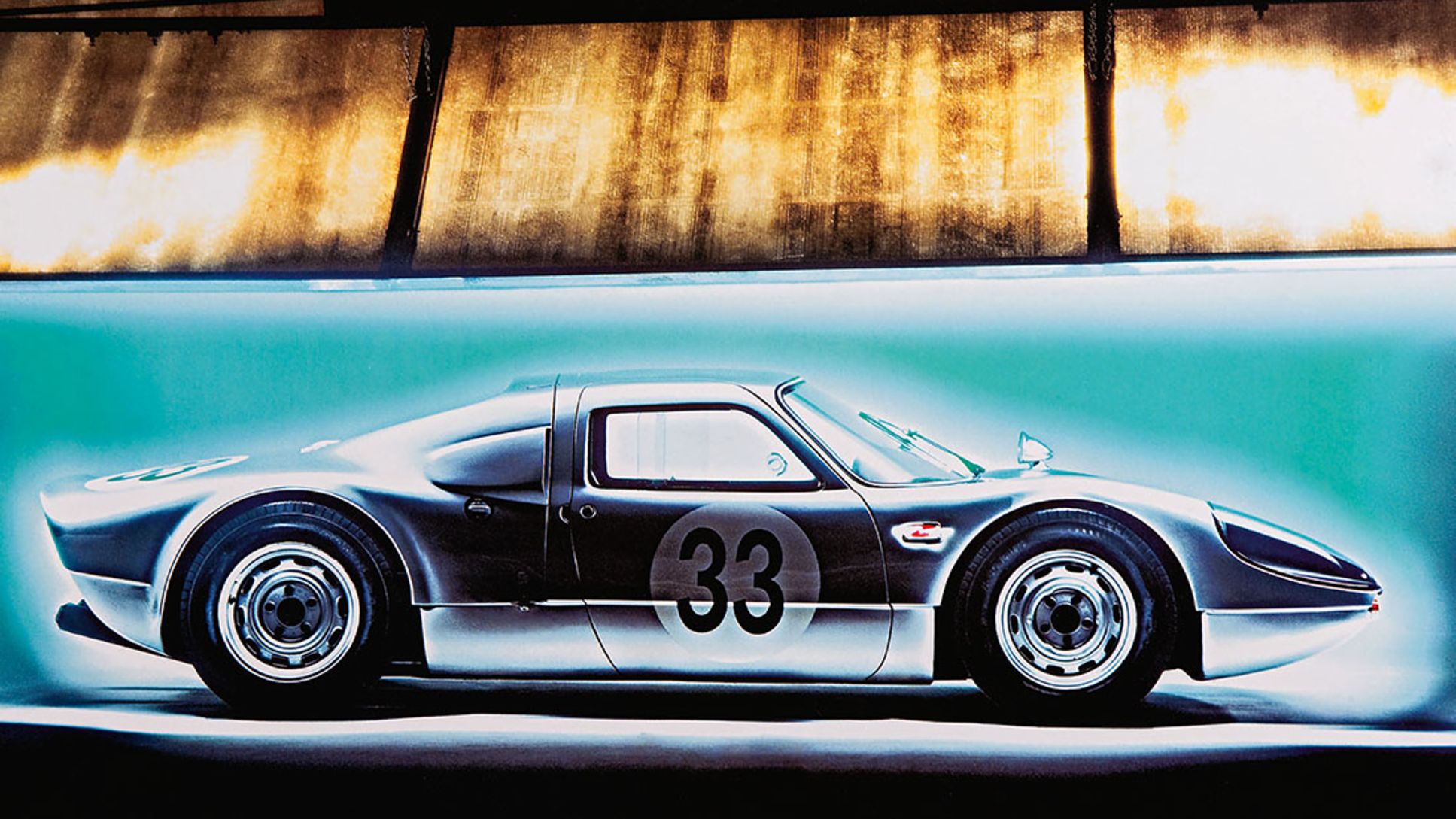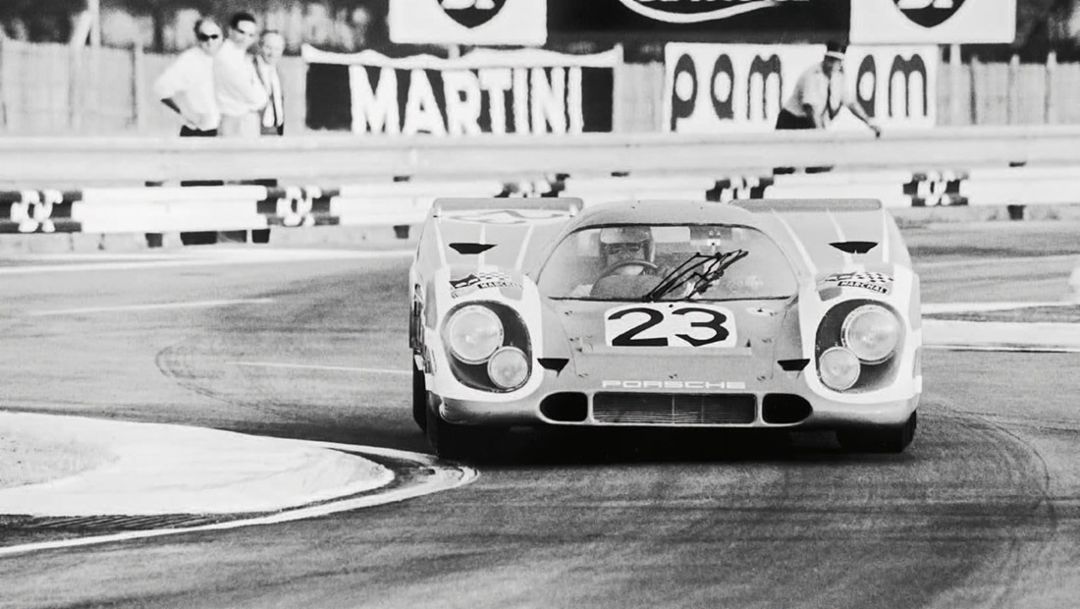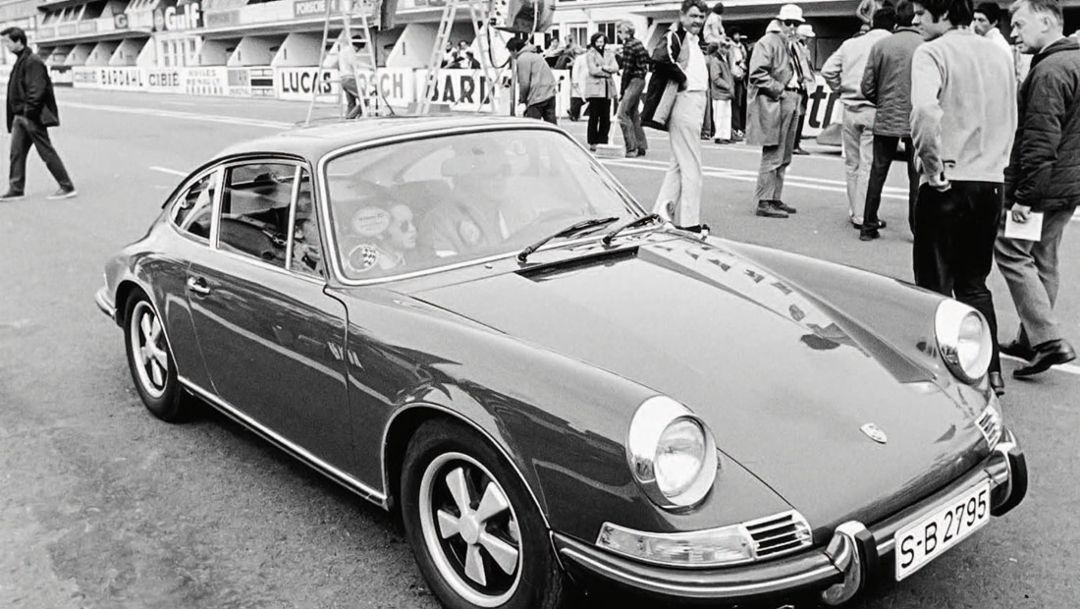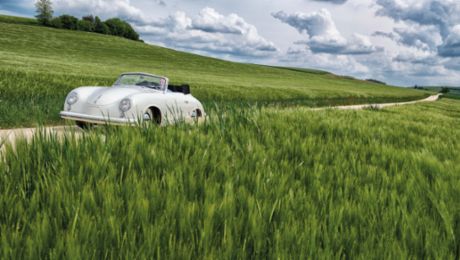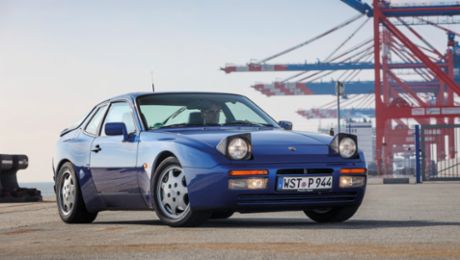Fact 7
On most race tracks you need to drive to the right. In Le Mans, too, driving is clockwise. That’s why in 1967, Porsche sent the first right-hand drive vehicle, a 907, to the start – to better place the driver’s weight onto the inner wheels in the many right-hand bends and to better set his sight on the bend vertex.
Fact 8
Jinx: In 1969, Hans Herrmann and Gérard Larrousse lost to the duo Jacky Ickx/Jackie Oliver in their Porsche 908 Longtail by just 120 meters. The reason: Hermann didn’t make full use of his Porsche’s superior braking performance, because a warning light indicated that the brake pads were worn. It turned out later that the brakes hadn’t hit the wall but the light itself. The race went down in history as one of the most nail-biting.
Fact 9
Hans Herrmann promised his wife: "If I win Le Mans, I’ll quit." After his first historic Le Mans victory in 1970 aged 42, the day had come. He delivered on his promise and announced his retirement from motorsports.
Fact 10
Steve McQueen didn’t just drive a Porsche on the big screen in the film "Le Mans" – a slate grey Porsche 911 S to be more precise. In private life, too, he chauffeured such a car – in 2011, the car was sold in top condition at auction at a price of more than EUR 950,000. Note: "Le Mans" was shot in 1970.
Fact 11
During the shooting of the film "LeMans", Steve McQueen entered the real 24 Hours of Le Mans with a car in 1970. Herbert Linge and Jonathan Williams piloted the 908/02 around the Sarthe circuit, armed with heavy camera equipment. Despite the weight handicap and several stops to change the film reels, they still managed to go 3,798 kilometers in 282 laps – an unofficial 8th place in the overall ranking.
Fact 12
Record entry: In 1971, 49 racers line up at the start, 33 of whom bank on a Porsche. A brand that hasn’t been outperformed to the present day.
Info
First published in "rampclassics", issue 4
photos: Studio Orel
